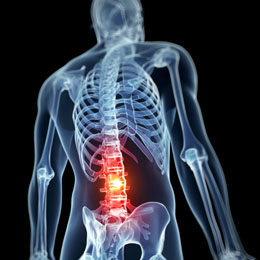This is a disease of the spinal cord which worsens as it progresses. The earlier it is diagnosed and treated, the better are the chances of recovery, although it is best to keep in mind that it cannot be fully corrected.

In human beings, the end of the spinal cord does not usually have any attachments to it, and hangs freely without any restrictions. But in tethered spinal cord syndrome (TCS), there is a tissue growth at the end of the spinal cord which attaches it to surrounding tissues. This limits the movement of the spinal cord, hampering the lifestyle of the person suffering from it. TCS is a congenital condition and if not treated in the early stages, it can lead to neurological impairments, progressive damage of the spinal cord, deformation of limbs, and in case of extreme severity, even incontinence and paralysis.
This condition can develop due to injuries to the spinal cord, or it can be congenital, wherein the neural tube of the fetus does not grow during its development. Scar tissue forms on the spinal cord when it stretches, obstructing the flow of the spinal fluid, leading to this syndrome. The symptoms begin to show depending on the strain that the spinal cord faces - more strain implying that symptoms show up early. There is every chance that this syndrome can go undetected till it has progressed, so it is necessary to pay attention to the symptoms and not dismiss them casually. To confirm the existence of TCS, any one of MRI, CT or CAT Scans, or an Ultrasound or Myleogram test can be undertaken. In extreme cases, surgery is recommended. Normal life expectancy can be achieved by proper treatment.
Causes
The main cause of this syndrome, is under-development of the neural tube during the fetal stage. Spina Bifida is another major cause, since in this condition, the end of the spinal cord remains attached to the skin on the back, making the cord tethered or low lying. This eventually leads to straining of the spinal cord, causing TCS. Surgery of the spine, or trauma to the spine due to accidents, can also lead to this condition. TCS can also be caused by
Lipomyelomeningocele or the formation of tumors/ fatty growths at the base of the spine, which restrict the movements of the spinal cord. A condition called
Split Spinal Cord, can also eventually lead to this syndrome. Abnormal attachment of tissues to the spine, leads to excessive stretching of the cord.
Symptoms
- Spinal deformities
- Deformation of hands and legs
- Lower back pain
- Tumors/ dimples on the lower back
- Lesions, hairy patches on the back
- Gradual loss of bladder and bowel movements
- Progressive loss of sensation in various body parts
- Muscle contractions and discoloration on lower back
- Tenderness of the spine
- Bilateral muscle/ tissue weakening
- Neurological symptoms like hyperreflexia, pathological plantar response, amyotropy, etc.
The
treatment of TCS includes surgery in the earliest stages, for prevention of further neurological deterioration, with regular follow-ups and other supportive and symptomatic treatments. The root of the spinal cord can be amputated, to relieve pain in patients.
Rehabilitation may be required in some cases, and it includes leg and/ or spine braces, bowel as well as diet training, catheterization or artificial urinary sphincter incorporation (used only in severe cases).
Tethered spinal cord syndrome being a comparatively rare condition, there is still a lot of scope for research on it. As I've mentioned above, early recognition of symptoms and suitable treatment to correct the syndrome is very crucial. Since this is a neurological condition, it is best to keep in mind that although TCS can be treated to some extent, it is not completely irreversible and progresses with time and age. The best course of action is timely treatment to relieve the pain and symptoms, to achieve normal life expectancy.


 In human beings, the end of the spinal cord does not usually have any attachments to it, and hangs freely without any restrictions. But in tethered spinal cord syndrome (TCS), there is a tissue growth at the end of the spinal cord which attaches it to surrounding tissues. This limits the movement of the spinal cord, hampering the lifestyle of the person suffering from it. TCS is a congenital condition and if not treated in the early stages, it can lead to neurological impairments, progressive damage of the spinal cord, deformation of limbs, and in case of extreme severity, even incontinence and paralysis.
In human beings, the end of the spinal cord does not usually have any attachments to it, and hangs freely without any restrictions. But in tethered spinal cord syndrome (TCS), there is a tissue growth at the end of the spinal cord which attaches it to surrounding tissues. This limits the movement of the spinal cord, hampering the lifestyle of the person suffering from it. TCS is a congenital condition and if not treated in the early stages, it can lead to neurological impairments, progressive damage of the spinal cord, deformation of limbs, and in case of extreme severity, even incontinence and paralysis.